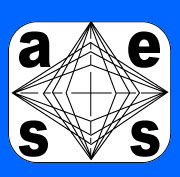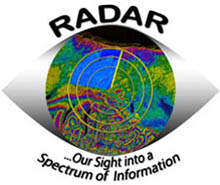  |
2006 IEEE Radar Conference |
|||||||||||||||||||||||||||||||||||
|
April
24 - 27, 2006
|
Turning
Stone Resort and Casino
|
Verona,
NY USA
|
||||||||||||||||||||||||||||||||||
|
||||||||||||||||||||||||||||||||||||
|
|
| Announcements Call for Papers -PDF version Important
Dates Keynote
Speaker About
the Area Logo background image courtesy NASA/JPL-Caltech. |
|
Tutorial
1.2 Space-Time
Adaptive Processing for AMTI and GMTI Radar Synopsis: Space-Time-Adaptive Processing (STAP) is becoming an integral part of modern airborne and space-based radars for performing Airborne Moving Target Indicator (AMTI) and Ground Moving Target Indicator (GMTI) functions. STAP is an application of optimum and adaptive array processing algorithms to the radar problem of target detection in ground clutter and interference with pulse-Doppler waveforms and multi-channel antennas and receivers. Coupled space-time processing is required to optimally mitigate the Doppler spreading of ground clutter induced by radar platform motion. This tutorial will begin with the fundamentals of adaptive beamforming and radar pulse-Doppler processing, move through principles and application of STAP, and conclude with a brief overview of some advanced current research topics. Optimum STAP and a taxonomy of practical STAP architectures and algorithms will be described in depth. Key aspects of a practical STAP algorithm include the methods for estimating the background interference, proper subspace selection, and the technique for computing STAP filter weights. Algorithms for providing rapid convergence, robustness to clutter inhomogeneities, robustness to steering vector calibration errors, and reduced computational complexity will be described. Displaced Phase Center Antenna (DPCA) processing will be presented as a nonadaptive space-time processor that gives insight into STAP performance. The effect of STAP on subsequent CFAR detection and target parameter estimation algorithms will be discussed briefly. Simulation and experimental data will be used to illustrate STAP concepts and algorithmic issues.
|


